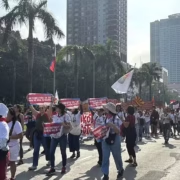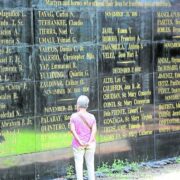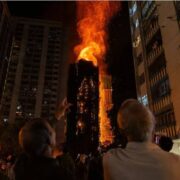Art takes root with trees that branch out to women with depression
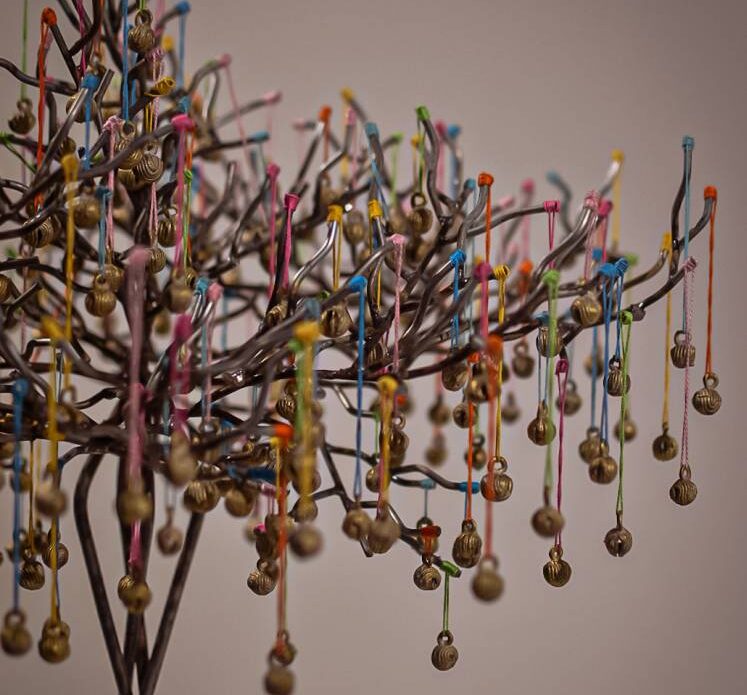
“I think that I shall never see / A poem lovely as a tree… A tree that may in Summer wear / A nest of robins in her hair; Upon whose bosom snow has lain; / Who intimately lives with rain. / Poems are made by fools like me, / But only God can make a tree.”
These are the words from the poem of Joyce Kilmer, memorized by schoolchildren, and if you’ll remember, laid out on the highway going south in the 2000s. Kilmer’s verse resonated in a recent exhibition at the Silverlens Den, with “Tree of Hope,” organized by Chary Mercado, featuring 15 Filipino artists and designers.
A forest of compassion
Entering the exhibition at Silverlens Den, the new cafe wing of the Makati and Manhattan-based gallery in Chino Roces, a range of miniature trees stands around two feet tall, each draped with a varying range of materials and colors.
With their twisting trunks and flowing branches, each tree was welded in metal by PDLs (persons deprived of liberty) at the Lipa City Jail as part of their livelihood training program. From here, they were passed to the artists, who reimagined them according to designs that embodied peace, freedom, and renewed hope.
“Tree of Hope” went beyond an exhibition, acting as a silent auction during the opening, as it also raised funds for Peace, Sis, a community-based program that supports indigent women living with clinical depression.
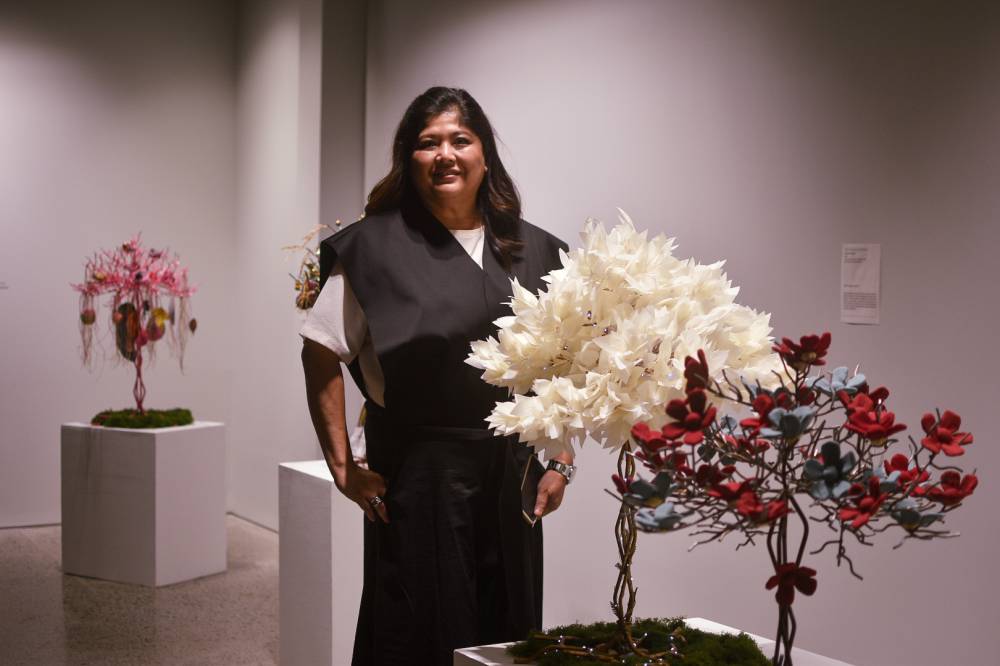
Speaking with Mercado, it’s clear that she’s a busy woman with a lot to give. She runs the volunteer group Happy to Help, and for more than 20 years, has worked with sectors often left unseen, such as disaster victims, the urban poor, and the jailed.
“We discovered when we were doing a project with women in the barrios, that some of them pala are depressed,” says Mercado. “That’s when I realized depression can hit so much harder if it’s a person without means and resources. Who’s going to take care of the kids if they stop working? So we said, let’s find ways to support them.”
“Tree of Hope” supports not just one, but two causes, for both the PDLs at the Lipa City Jail and the mental health program of Peace, Sis.
“Our plan has three parts,” Mercado shares. “First, we give more workshops—art as therapy and as skill-building. We brought in a loom and people who knew the indigenous way of creating natural woven tela. It’s a project to keep their minds focused on something. Second, we’ll have an information campaign for the kids and spouses of women with depression, so they understand that it’s an illness. And third, we’ll provide a monthly stipend for medication. Because if it’s clinical depression, it’s a chemical imbalance. You can’t get better if you don’t correct that imbalance.”
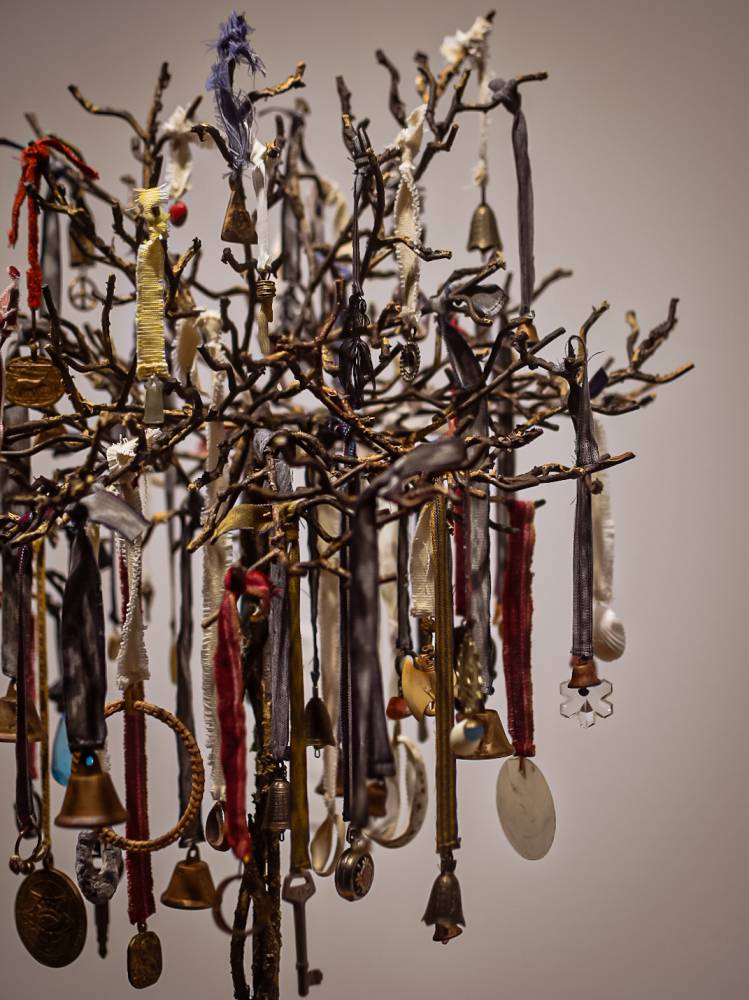
Giving form to peace
Each of the trees is unique, poetic as well as personal. Next to each tree is not just the label listing materials but also notes on what gave each of the artists peace.
Leah and Patricia Puyat shaped a pretty, Christmas-like tree with paper flowers, plastic ornaments, and immaculately white fabric poinsettias, with LED garlands draped around it. “When I listen to church choir music, such as those sung by the Benedictines of Mary Queen of Apostles,” they say, “a calming balm of peace envelopes me.”
For Jen Calma-Sarmiento of Coco and Tres, whose tree is layered with dried glass and flowers, metal hardware, and resin figures, peace comes from faith. “My peace is knowing there is a greater Being and a higher purpose than my own.”
Len Cabili of Filip + Inna, known for her distinctive Filipino clothing line, also raised it, noting what brings her peace is, “When I work with my hands. God gave us hands for a reason: to use them to create.”
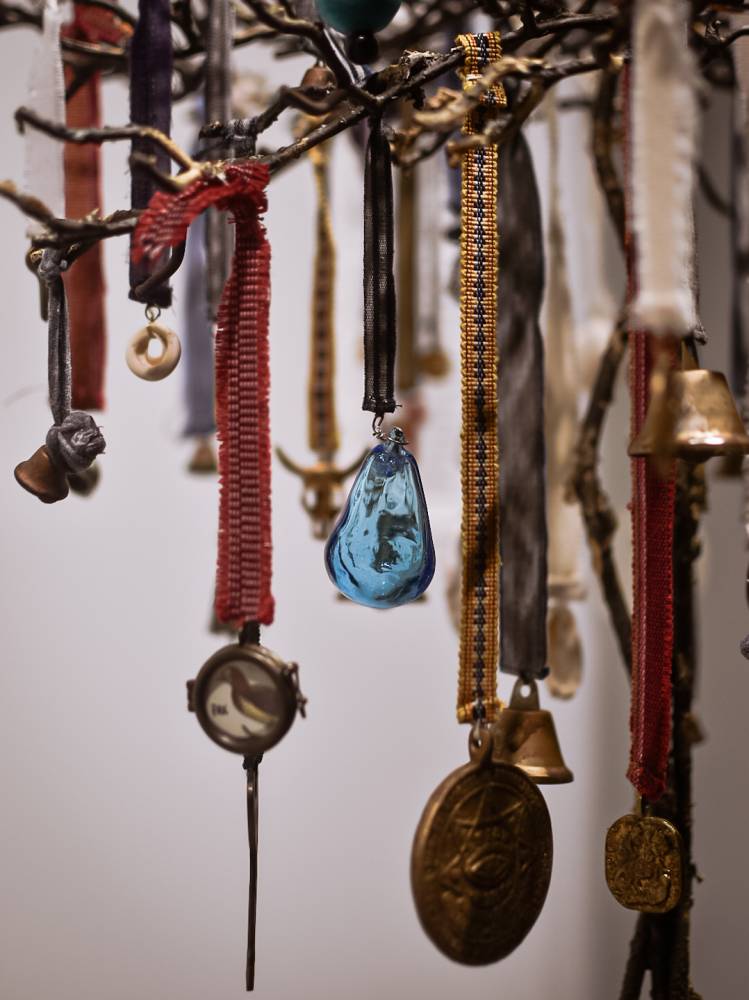
Meanwhile, Mia Villanueva of bag brand MCV Designs dressed her tree in handwoven, upcycled textiles and wooden beads. “What brings me peace is knowing my family is safe and we are all together,” although she adds, “but what brings me joy is watching and talking to my kitty.”
Nina Lim-Yuson, known for her travel sketches, offered a wish that extends beyond the self: “What brings me peace is when my country, the Philippines, takes good care of its people.”
And for furniture designer Monica Olondriz, who called her piece the “Memory Tree,” peace is elemental and sensory: “Toes in the sand, head underwater, eyes on a horizon.”
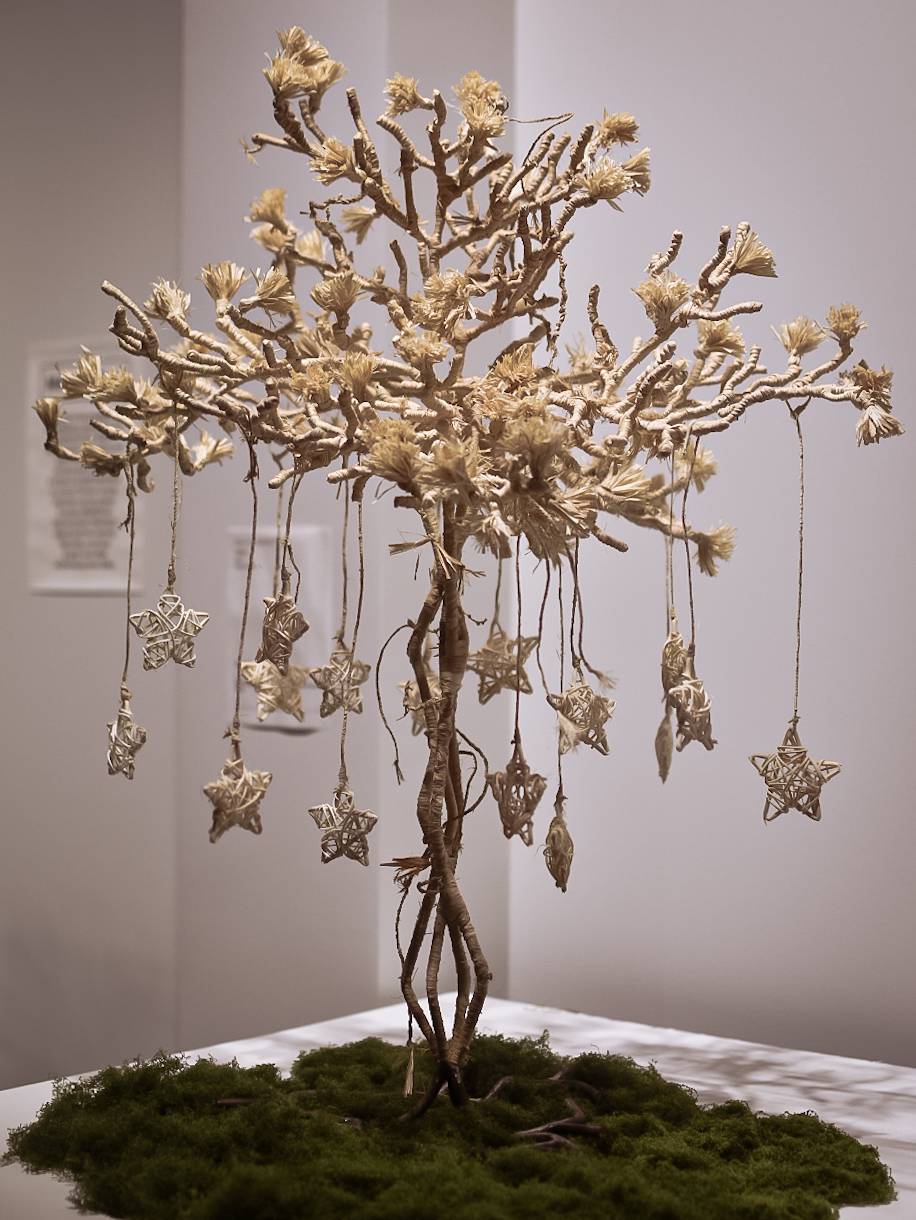
Other artists included couturier Rajo Laurel, Pia Regala-Hebron of Lady Rustan, and Apol Massebieau of fashion line Good Luck, Humans. Rey Legarda of bag label Il Mio also contributed a tree. There were quite a few representatives from the design industry, too, including Anton Barretto, Tania Fricke, and Popi Laudico. Traditional visual artists also tried their hand at sculpture, such as painters Reina Cruz and Aina Zulueta-Valencia.
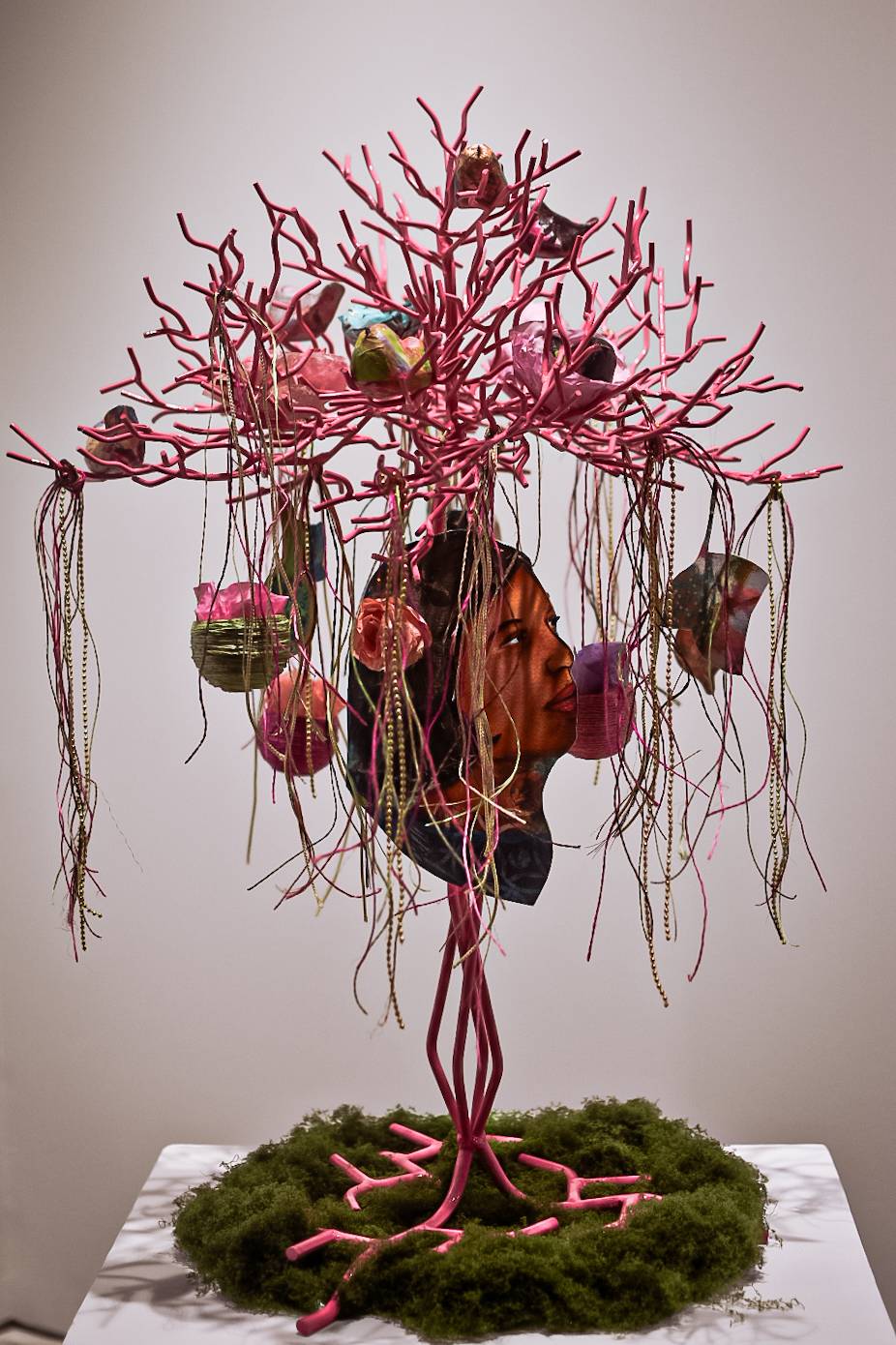
Olive branches to listen and see
Mercado reminds us that compassion extends beyond these projects and into real presence. “Sometimes these people just need somebody to talk to,” she reflects. “A non-judgy, open-minded person who’ll say, ‘Okay, tell me what’s happening. I hear you.’ Even just saying, ‘You got up today—that’s pretty good,’ helps.”
That ethos, through her many social projects, echoes throughout “Tree of Hope,” with each artist’s interpretation acting as an extended hand. “People do want to reach out to women in depression,” Mercado says. “The artist cares, the buyer cares. There’s a solidarity there. We want to reach out, we want to help. If this is the best way we can, then that’s what Happy to Help exists for. We’re the conduit between the people who have needs and the people who want to give.”
“Tree of Hope” was held at the Silverlens Den, Chino Roces Ave., Makati, last Nov. 5



